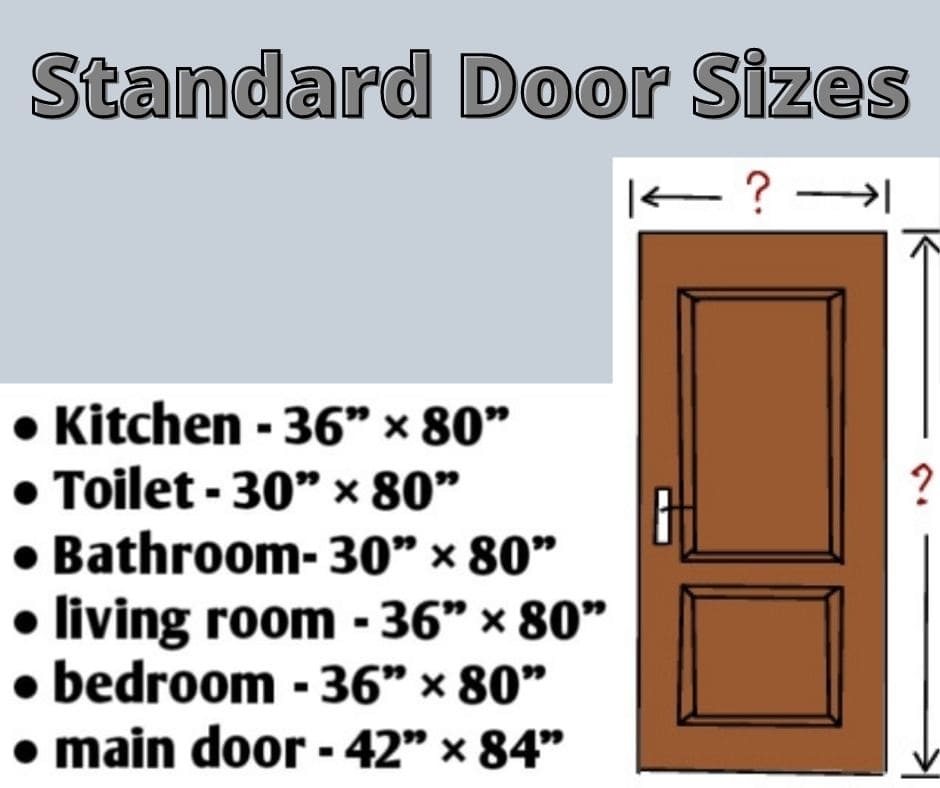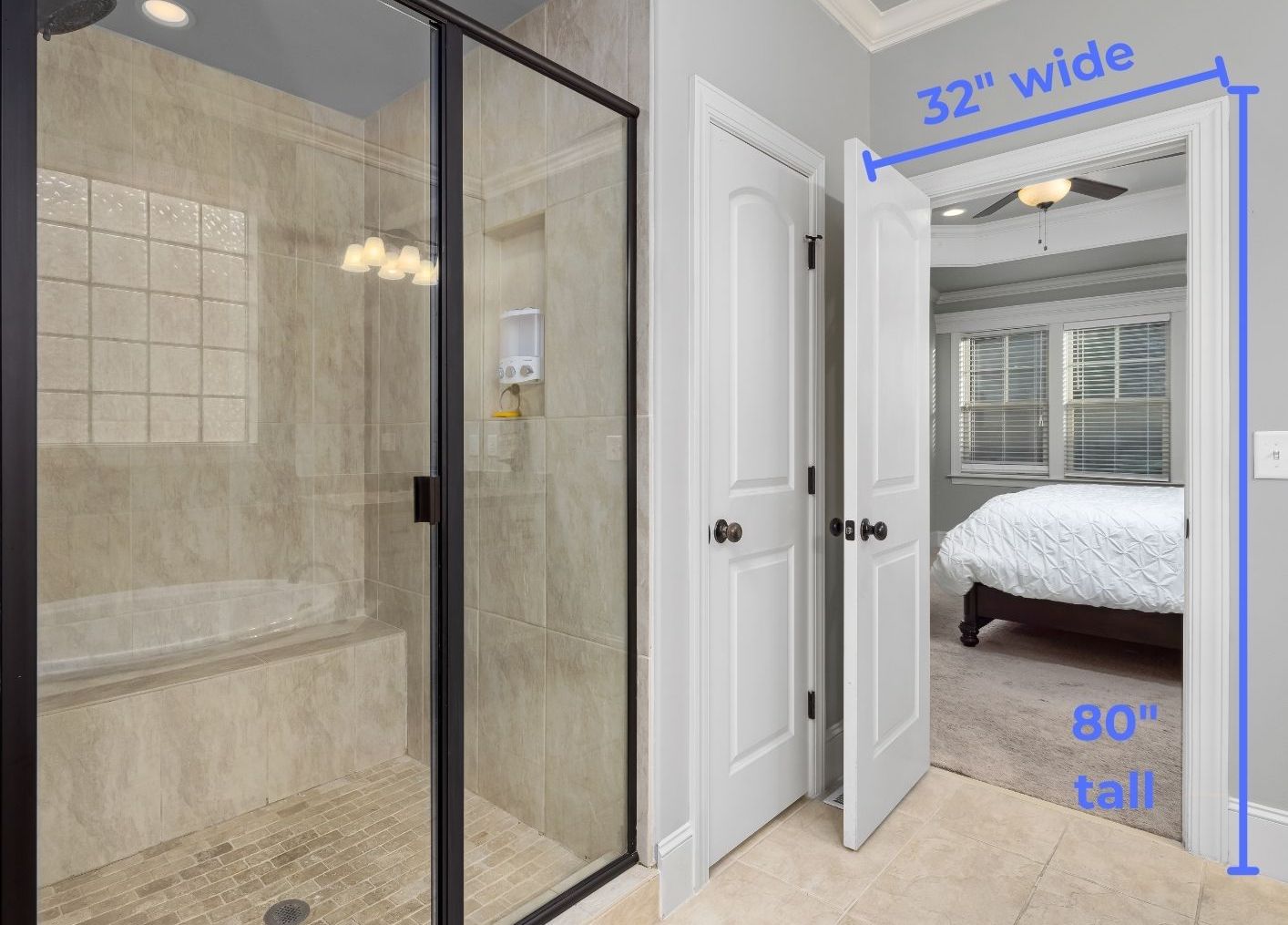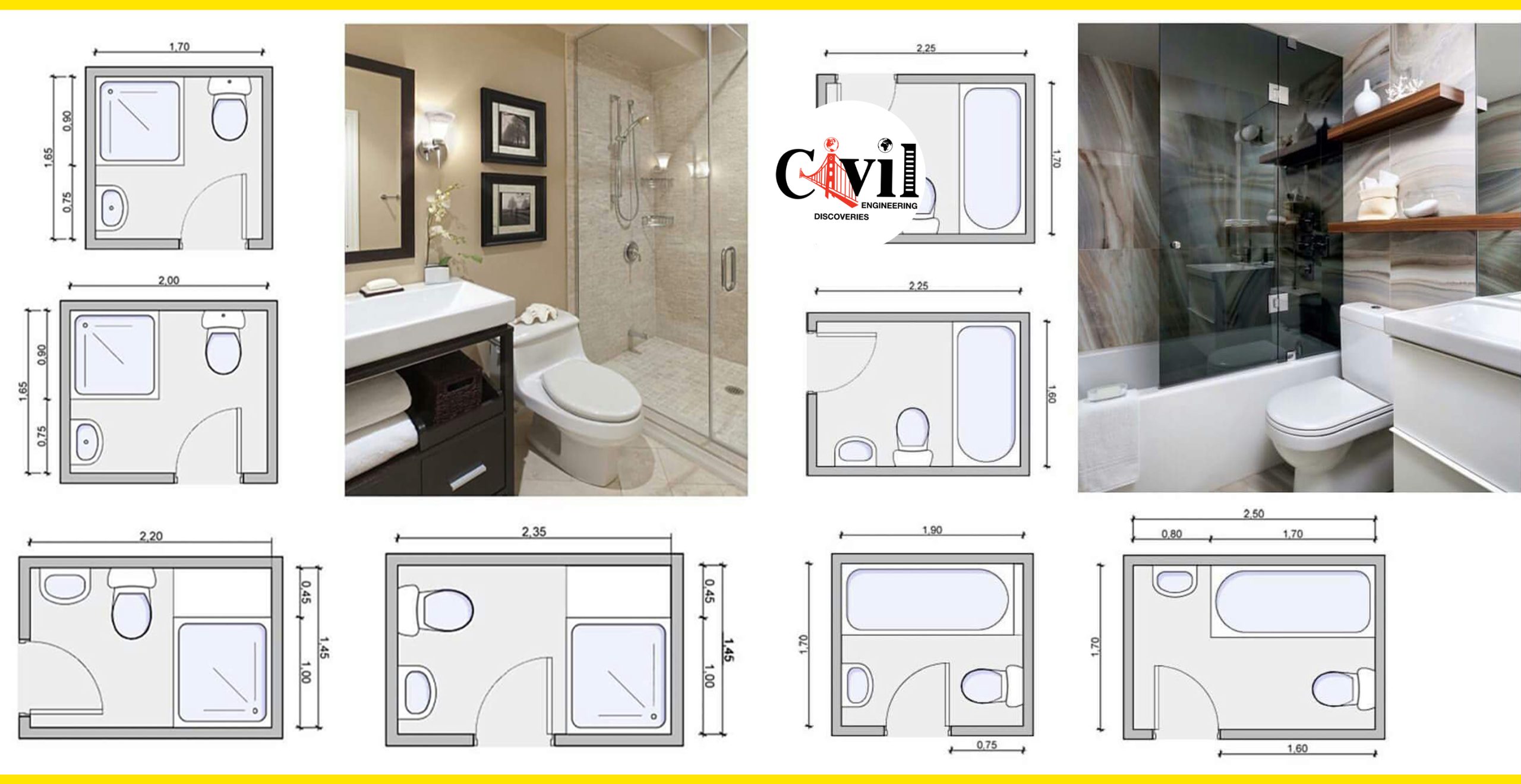Standard Bathroom Door Dimensions

Standard bathroom door dimensions are crucial for ensuring accessibility, functionality, and aesthetics in residential and commercial spaces. These dimensions are typically determined by building codes, accessibility regulations, and common door types.
Standard Bathroom Door Sizes
The following table summarizes the standard bathroom door sizes for different types of bathrooms:
| Bathroom Type | Door Width | Door Height |
|—|—|—|
| Residential | 30 inches (76 cm) | 80 inches (203 cm) |
| Commercial | 32 inches (81 cm) | 80 inches (203 cm) |
| Accessible | 36 inches (91 cm) | 80 inches (203 cm) |
Factors Influencing Standard Door Size
Several factors influence the standard door size for bathrooms:
Accessibility Regulations
The Americans with Disabilities Act (ADA) mandates specific door dimensions for accessible bathrooms to ensure easy access for individuals with disabilities. These regulations typically require a minimum door width of 32 inches (81 cm) and a clear opening of 30 inches (76 cm).
Building Codes
Local building codes often specify minimum door widths and heights for bathrooms, depending on the type of building and its intended use. These codes may vary depending on the jurisdiction.
Common Door Types
The type of door used for a bathroom can also influence the standard size. For example, single-swing doors are typically narrower than double-swing doors.
Importance of Adhering to Standard Door Dimensions
Adhering to standard bathroom door dimensions is crucial for several reasons:
Safety
Standard door sizes ensure adequate space for safe passage, particularly for individuals with mobility impairments. Narrow doors can pose a tripping hazard and obstruct wheelchair access.
Functionality
Standard door dimensions facilitate the efficient movement of people and furniture in and out of the bathroom. They also allow for the installation of standard bathroom fixtures, such as toilets and sinks.
Aesthetics
Standard door sizes contribute to the overall aesthetic appeal of the bathroom. They create a sense of balance and proportion, ensuring the door blends seamlessly with the surrounding architecture.
Door Types and Styles

Choosing the right bathroom door type and style can significantly impact the overall functionality and aesthetics of your bathroom. A well-chosen door not only provides privacy but also enhances the flow and feel of the space.
Single Doors
Single doors are the most common type of bathroom door, offering a simple and practical solution. They are typically hinged on one side and swing open in a single direction.
- Advantages:
- Cost-effective: Single doors are generally the most affordable option.
- Easy installation: They are relatively simple to install, making them suitable for DIY projects.
- Space-saving: Single doors require minimal space to operate, making them ideal for smaller bathrooms.
- Disadvantages:
- Limited access: Single doors can be difficult to maneuver in tight spaces, especially if you have bulky items to bring in or out.
- Limited privacy: The swinging motion can create a gap between the door and the frame, potentially compromising privacy.
Double Doors
Double doors, also known as French doors, consist of two panels that swing open in opposite directions.
- Advantages:
- Enhanced access: Double doors provide a wider opening, making it easier to move large furniture or appliances in and out of the bathroom.
- Increased light: Double doors can allow more natural light to enter the bathroom, creating a brighter and more welcoming space.
- Elegant design: French doors add a touch of elegance and sophistication to the bathroom design.
- Disadvantages:
- Higher cost: Double doors are typically more expensive than single doors.
- More space required: Double doors need more space to swing open, making them unsuitable for small bathrooms.
Sliding Doors
Sliding doors move horizontally along a track, opening and closing without swinging into the room.
- Advantages:
- Space-saving: Sliding doors are ideal for small bathrooms, as they don’t require any swinging space.
- Easy access: They are easy to open and close, even in tight spaces.
- Disadvantages:
- Limited privacy: Some sliding doors may have gaps between the panels, compromising privacy.
- Potential for noise: The sliding mechanism can sometimes be noisy, especially with older models.
Pocket Doors
Pocket doors slide into a concealed pocket within the wall, disappearing completely when open.
- Advantages:
- Space-saving: Pocket doors are excellent for maximizing space, as they don’t take up any floor space when open.
- Clean lines: They offer a sleek and modern look, seamlessly blending into the wall.
- Disadvantages:
- Expensive: Pocket doors are typically the most expensive option, as they require specialized installation.
- Complex installation: They require significant wall modifications, making them more challenging to install than other door types.
Door Styles
The style of your bathroom door can significantly impact the overall look and feel of the room. Here are some popular door styles and their suitability for various bathroom designs:
| Door Style | Description | Suitability |
|---|---|---|
| French Doors | Two panels that swing open in opposite directions, often featuring glass panes. | Traditional, elegant, or farmhouse bathrooms. |
| Louvered Doors | Doors with horizontal slats that allow for ventilation and light diffusion. | Coastal, rustic, or farmhouse bathrooms. |
| Frosted Glass Doors | Doors with frosted glass panels that provide privacy while allowing light to pass through. | Modern, contemporary, or minimalist bathrooms. |
| Solid Wood Doors | Doors made from solid wood, offering durability and a natural aesthetic. | Traditional, rustic, or farmhouse bathrooms. |
| Paneled Doors | Doors with raised or recessed panels, adding visual interest and texture. | Traditional, classic, or contemporary bathrooms. |
Factors Affecting Bathroom Door Size: Bathroom Door Size Standard

The size of a bathroom door is not arbitrary; it’s determined by several factors that ensure functionality, accessibility, and aesthetic harmony within the space. Understanding these factors is crucial for choosing the right door size for your bathroom.
Bathroom Size
The size of the bathroom itself is a primary determinant of the door size. Larger bathrooms generally accommodate wider doors, allowing for easier movement of furniture and fixtures. In contrast, smaller bathrooms might necessitate narrower doors to maximize space utilization.
Fixture Placement
The placement of fixtures like the toilet, sink, and shower within the bathroom also influences door size. If a fixture is positioned close to the door, a wider door might be required to provide adequate clearance for movement.
Accessibility Requirements
Bathrooms must adhere to accessibility standards for individuals with disabilities. These standards dictate minimum door widths to accommodate wheelchairs and other assistive devices.
Door Types and Styles
The type and style of door chosen also impact its size. Swinging doors typically require more space than sliding doors, while French doors might necessitate wider openings.
Non-Standard Door Sizes, Bathroom door size standard
In certain situations, non-standard door sizes might be necessary. For example:
* Limited Space: In bathrooms with limited space, a narrower door might be the only option to maximize floor area.
* Unusual Layout: Bathrooms with unique layouts or unusual fixture placement may require custom door sizes to ensure functionality and aesthetics.
* Design Considerations: Architectural styles or design preferences may necessitate non-standard door sizes to achieve a specific look or feel.
Bathroom door size standard – The standard bathroom door size is often overlooked, yet it plays a crucial role in creating a functional and comfortable space. Beyond its dimensions, however, lies the intriguing question of whether a bathroom door can open outwards, a topic explored in detail here.
While outward-opening doors might seem unconventional, they can offer unique advantages in certain situations. Ultimately, the choice of door size and direction hinges on individual needs and the specific design of the bathroom, ensuring a harmonious blend of practicality and aesthetics.
While bathroom door size standards might seem like a mundane detail, they play a vital role in creating a functional and comfortable space. And within that space, the hinges connecting the stall door are the unsung heroes, ensuring smooth and reliable operation.
If you’re seeking high-quality hinges for your bathroom stall door, consider exploring the range available at bathroom stall door hinges grainger. Choosing the right hinges can enhance the overall experience, just as adhering to the proper door size standard creates a sense of harmony and practicality in the bathroom.